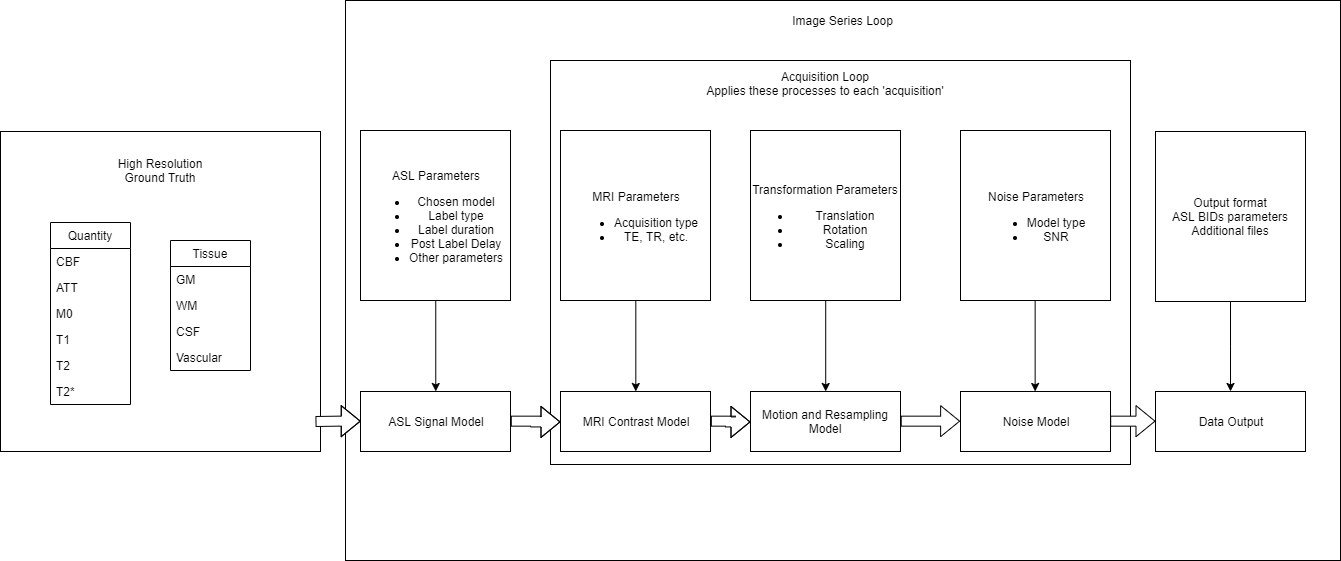Quickstart¶
Getting started¶
Eager to get started? This page gives a good introduction to ASL DRO. Follow Installation to set up a project and install ASL DRO first.
After installation the command line tool asldro will be made available. You can run:
asldro generate path/to/output_file.zip
to run the DRO generation as-per the ASL White Paper specification. The output file may be either .zip or .tar.gz.
Is it also possible to specify a parameter file, which will override any of the default values:
asldro generate --params path/to/input_params.json path/to/output_file.zip
It is possible to create an example parameters file containing the model defaults by running:
asldro output params /path/to/input_params.json
which will create the /path/to/input_params.json file. The parameters may be adjusted as
necessary and used with the ‘generate’ command.
For details on input parameters see Parameters
It is also possible to output the high-resolution ground-truth (HRGT) files. To get a list of the available data, type:
asldro output hrgt -h
To output the HRGT, type:
asldro output hrgt HRGT OUTPUT_DIR
where HRGT is the code of the files to download, and OUTPUT_DIR is the directory to output to.
Pipeline details¶
There are three pipelines available in ASLDRO
The full ASL pipeline.
A structural MRI pipeline (generates gradient echo, spin echo or inversion recovery signal).
A ground truth pipeline that simply resamples the input ground truth to the specified resolution.
In a single instance of ASLDRO, the input parameter file can configure any number and configurations of these pipelines to be run, much in the way that this can be done on an MRI scanner.
The full ASL pipeline comprises of:
Loading in the ground truth volumes.
Producing \(\Delta M\) using the General Kinetic Model for the specified ASL parameters.
Generating synthetic M0, Control and Label volumes.
Applying motion
Sampling at the acquisition resolution
Adding instrument and physiological pseudorandom noise.
The structural pipeline excludes the General Kinetic Model, and just generates volumes with synthetic MR contrast. The ground truth pipeline only has the motion model and sampling.
Each volume described in asl_context has the motion, resampling and noise processes applied
independently. The rotation and translation arrays in the input parameters describe this motion, and
the the random number generator is initialised with the same seed each time the DRO is run, so each
volume will have noise that is unique, but statistically the same.
If desired_snr is set to 0, the resultant images will not have any noise applied.
Each pipeline outputs files in BIDS (https://bids.neuroimaging.io/) format, consisting of a NIFTI image file and accompanying json sidecar. In the case of an ASL image an additional ‘*_aslcontext.tsv’ file is also generated which describes the ASL volumes present in the timeseries.
The DRO pipeline is summarised in this schematic (click to view full-size):
